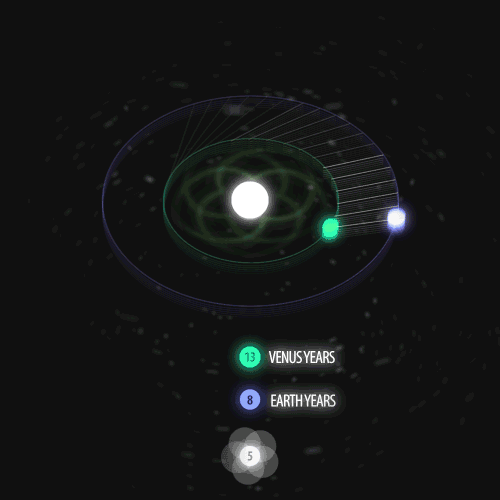Scientists Discover The Oldest, Largest Body Of Water In Existence–In Space

Scientists Discover The Oldest, Largest Body Of Water In Existence–In Space
Scientists have found the biggest and oldest reservoir of water ever–so large and so old, it’s almost impossible to describe.
The water is out in space, a place we used to think of as desolate and desert dry, but it’s turning out to be pretty lush.
Researchers found a lake of water so large that it could provide each person on Earth an entire planet’s worth of water–20,000 times over. Yes, so much water out there in space that it could supply each one of us all the water on Earth–Niagara Falls, the Pacific Ocean, the polar ice caps, the puddle in the bottom of the canoe you forgot to flip over–20,000 times over.
The water is in a cloud around a huge black hole that is in the process of sucking in matter and spraying out energy (such an active black hole is called a quasar), and the waves of energy the black hole releases make water by literally knocking hydrogen and oxygen atoms together.
The official NASA news release describes the amount of water as “140 trillion times all the water in the world’s oceans,“ which isn’t particularly helpful, except if you think about it like this.
That one cloud of newly discovered space water vapor could supply 140 trillion planets that are just as wet as Earth is.
Mind you, our own galaxy, the Milky Way, has about 400 billion stars, so if every one of those stars has 10 planets, each as wet as Earth, that’s only 4 trillion planets worth of water.
The new cloud of water is enough to supply 28 galaxies with water.
Truly, that is one swampy patch of intergalactic space.
Equally stunning is the age of the water factory. The two teams of astrophysicists that found the quasar were looking out in space a distance of 12 billion light years. That means they were also looking back in time 12 billion years, to when the universe itself was just 1.6 billion years old. They were watching water being formed at the very start of the known universe, which is to say, water was one of the first substances formed, created in galactic volumes from the earliest time. Given water’s creative power to shape geology, climate and biology, that’s dramatic.
“It’s another demonstration that water is pervasive throughout the universe, even at the very earliest times,” says Matt Bradford, an astrophysicist at NASA’s Jet Propulsion Laboratory and leader of one of the teams that made the discovery. (The journal article reporting the discovery is titled, without drama, “The Water Vapor Spectrum of APM 08279+5255: X-Ray Heating and Infrared Pumping over Hundreds of Parsecs.”)
It is not as if you’d have to wear foul-weather gear if you could visit this place in space, however. The distances are as mind-bogglingly large as the amount of water being created, so the water vapor is the finest mist–300 trillion times less dense than the air in a typical room.
And it’s not as if this intergalactic water can be of any use to us here on Earth, of course, at least not in the immediate sense. Indeed, the discovery comes as a devastating drought across eastern Africa is endangering the lives of 10 million people in Somalia, Kenya, and Ethiopia. NASA’s water discovery should be a reminder that if we have the sophistication to discover galaxies full of water 12 billion light years away, we should be able to save people just an ocean away from drought-induced starvation.
The NASA announcement is also a reminder how quickly our understanding of the universe is evolving and how much capacity for surprise nature still has for us. There’s water on Mars, there’s water jetting hundreds of miles into space from Enceladus, one of Saturn’s moons, there are icebergs of water hidden in the polar craters of our own Moon. And now it turns out that a single quasar has the ability to manufacture galaxies full of water.
But it was only 40 years ago, in 1969, that scientists first confirmed that water existed anywhere besides Earth.
More Posts from Fillthevoid-with-space and Others

In November, a couple lovely people brought my attention to articles about a recent discovery that headlines consistently referred to as the ‘zombie star.’ What the heck is a zombie star? What makes it a zombie? I found a zombie star from 2014 in addition to the one in 2017 and I dug into the life cycle of the average star to get a sense of what undeath looks like in stars.
Below the cut are my sources, music credits, a vocab list, and the transcript of this episode. Suggest what you think I should research next by messaging me here, tweeting at me at @HDandtheVoid, or asking me to my face if you know me. Please subscribe on iTunes, rate it and maybe review it, and tell friends if you think they’d like to hear it! Also, welcome if you found me through PodCon!
(My thoughts on the next episode are the International Space Station, the transit of Venus, or astronaut training practices. The next episode will allegedly be up on New Year’s Day, January 1st. We’ll see about that.)
Glossary
Chandrasekhar limit - the upper limit for the mass of an astronomical body that can support extreme density without imploding: about 1.4 times the mass of our Sun. Any white dwarf star that has less than that mass will stay a white dwarf forever; any star that exceeds the Chandrasekhar limit will end in a supernova.
dwarf nova - a close binary system of a red dwarf, a white dwarf, and an accretion disk around the white dwarf. They brighten by 2 to 6 magnitudes depending on the stability of the disk, which loses material to the white dwarf. Categorized as a cataclysmic variable.
neutron star - a type of star that has gone supernova, when the surviving core is 1.5 to 3 solar masses and contracts into a small, very dense, very fast-spinning star.
nova - a close binary system of a white dwarf and a secondary star that’s a little cooler than the Sun. The system brightens 7 to 16 magnitudes in 1 to 100 days, and then the star fades slowly to the initial brightness over a period of several years or decades. At maximum brightness, it’s similar to an A or F giant star. Recurrent novae are similar to this category of variable but have several outbursts during their recorded history. Categorized as a cataclysmic variable.
pulsar - a type of neutron star that spins very, very fast. Also a kind of variable star that emits light pulses usually between 0.0014 seconds and 8.5 seconds.
reflection telescope - reflects light rays off the concave surface of a parabolic mirror to get an image of a distant object. Higher contrast image, worse color quality.
spectroscopy - the study of light from an incandescent source (or, more recently, electromagnetic radiation and other radiative energy) that has its wavelength dispersed by a prism or other spectroscopic device that can disperse an object’s wavelength. The spectra of distant astronomical objects like the Sun, stars, or nebulae are patterns of absorption lines that correspond to elements that these objects are made up of.
supernova - a massive star that explodes with a magnitude increase of 20 or more. Supernovae have led us to realize that the expansion of the Universe is accelerating.
supernova progenitors - the kinds of stars and conditions that will result in certain types of supernovae.
white dwarf star - a star that has exhausted all of its nuclear fuel (i.e. no longer has hydrogen to convert into helium through nuclear fusion). It is the hot, dense core of a star. Unless it is acquiring/accreting matter from a nearby star, it will cool over time and become a dead star.
Script/Transcript
Sources
Chandrasekhar limit via PBS, Jan 2012
“The Chandrasekhar Limit is therefore not just as upper limit to the maximum mass of an ideal white dwarf, but also a threshold. A star surpassing this threshold no longer hoards its precious cargo of heavy elements. Instead, it delivers them to the universe at large in a supernova that marks its own death but makes it possible for living beings to exist.”
Type I and Type II supernovae via Space.com
Type Ia supernovae via Swinburne University of Technology
Type Ia Supernova Progenitors via Swinburne University of Technology
Zombie star via NASA, Aug 2014
Curtis McCully “I was very surprised to see anything at the location of the supernova. We expected the progenitor system would be too faint to see, like in previous searches for normal Type Ia supernova progenitors. It is exciting when nature surprises us.”
The abstract of the article McCully and his team wrote on Type 1ax supernovae via Nature Magazine, Aug 2014
Zombie star via CNN, Nov 2017
Arcavi: "My first thought was that this must be some nearby star in our galaxy, just varying its brightness. But when we got the first spectrum of it, we saw that it was in fact a supernova 500 million light-years away. My mind was blown. The fact that it got bright and dim five times was very unusual. We'd never seen a supernova do that before."
Arcavi: "This means that we still have a lot to learn about how massive stars evolve and how they explode."
Robert Evans via Sky and Telescope, Sept 2005
2017 zombie star articles I didn’t use because there were too many of them:
Air and Space Magazine, Nov 2017
The Atlantic, Nov 2017
BBC News, Nov 2017
BGR, Nov 2017
Carnegie Science, Nov 2017
Earth Sky, Nov 2017
Express UK, Nov 2017
The Guardian, Nov 2017
Intro Music: ‘Better Times Will Come’ by No Luck Club off their album Prosperity
Filler Music: 'Toll Free’ by the Shook Twins off their album What We Do
Outro Music: ‘Fields of Russia’ by Mutefish off their album On Draught





Fibonacci you crazy bastard….
As seen in the solar system (by no ridiculous coincidence), Earth orbits the Sun 8 times in the same period that Venus orbits the Sun 13 times! Drawing a line between Earth & Venus every week results in a spectacular FIVE side symmetry!!
Lets bring up those Fibonacci numbers again: 1, 1, 2, 3, 5, 8, 13, 21, 34..
So if we imagine planets with Fibonacci orbits, do they create Fibonacci symmetries?!
You bet!! Depicted here is a:
2 sided symmetry (5 orbits x 3 orbits)
3 sided symmetry (8 orbits x 5 orbits)
5 sided symmetry (13 orbits x 8 orbits) - like Earth & Venus
8 sided symmetry (21 orbits x 13 orbits)
I wonder if relationships like this exist somewhere in the universe….
Read the Book | Follow | Hi-Res -2- -3- -5- -8-
The Beauty of Webb Telescope’s Mirrors
The James Webb Space Telescope’s gold-plated, beryllium mirrors are beautiful feats of engineering. From the 18 hexagonal primary mirror segments, to the perfectly circular secondary mirror, and even the slightly trapezoidal tertiary mirror and the intricate fine-steering mirror, each reflector went through a rigorous refinement process before it was ready to mount on the telescope. This flawless formation process was critical for Webb, which will use the mirrors to peer far back in time to capture the light from the first stars and galaxies.

The James Webb Space Telescope, or Webb, is our upcoming infrared space observatory, which will launch in 2019. It will spy the first luminous objects that formed in the universe and shed light on how galaxies evolve, how stars and planetary systems are born, and how life could form on other planets.
A polish and shine that would make your car jealous

All of the Webb telescope’s mirrors were polished to accuracies of approximately one millionth of an inch. The beryllium mirrors were polished at room temperature with slight imperfections, so as they change shape ever so slightly while cooling to their operating temperatures in space, they achieve their perfect shape for operations.

The Midas touch
Engineers used a process called vacuum vapor deposition to coat Webb’s mirrors with an ultra-thin layer of gold. Each mirror only required about 3 grams (about 0.11 ounces) of gold. It only took about a golf ball-sized amount of gold to paint the entire main mirror!

Before the deposition process began, engineers had to be absolutely sure the mirror surfaces were free from contaminants.

The engineers thoroughly wiped down each mirror, then checked it in low light conditions to ensure there was no residue on the surface.

Inside the vacuum deposition chamber, the tiny amount of gold is turned into a vapor and deposited to cover the entire surface of each mirror.

Primary, secondary, and tertiary mirrors, oh my!
Each of Webb’s primary mirror segments is hexagonally shaped. The entire 6.5-meter (21.3-foot) primary mirror is slightly curved (concave), so each approximately 1.3-meter (4.3-foot) piece has a slight curve to it.

Those curves repeat themselves among the segments, so there are only three different shapes — 6 of each type. In the image below, those different shapes are labeled as A, B, and C.

Webb’s perfectly circular secondary mirror captures light from the 18 primary mirror segments and relays those images to the telescope’s tertiary mirror.

The secondary mirror is convex, so the reflective surface bulges toward a light source. It looks much like a curved mirror that you see on the wall near the exit of a parking garage that lets motorists see around a corner.

Webb’s trapezoidal tertiary mirror captures light from the secondary mirror and relays it to the fine-steering mirror and science instruments. The tertiary mirror sits at the center of the telescope’s primary mirror. The tertiary mirror is the only fixed mirror in the system — all of the other mirrors align to it.

All of the mirrors working together will provide Webb with the most advanced infrared vision of any space observatory we’ve ever launched!
Who is the fairest of them all?
The beauty of Webb’s primary mirror was apparent as it rotated past a cleanroom observation window at our Goddard Space Flight Center in Greenbelt, Maryland. If you look closely in the reflection, you will see none other than James Webb Space Telescope senior project scientist and Nobel Laureate John Mather!

Learn more about the James Webb Space Telescope HERE, or follow the mission on Facebook, Twitter and Instagram.
Make sure to follow us on Tumblr for your regular dose of space: http://nasa.tumblr.com.
It’s international dark sky week! Please enjoy this great Bortle scale.
skyglowproject What sky do you live under? Learn more at SKYGLOWPROJECT.COM
Talking to a real cosmonaut
I met cosmonaut Sergei Volkov the other day as well as astronaut Andreas Mogensen (yeah I was geeking out hard) and I asked Sergei, after a total of 1½ year in space, what came as the biggest surprise and I expected this grand answer..
but he was like “in space, your t-shirt is floating too. It’s not hanging on you. It’s a weird sensation. There’s not really anything in space that stresses your body which is why we exercise.. like Andreas said, first time in space, you forget that you can just leave your fork floating while you’re opening your food. you try and put it down on a surface or hold everything in your hand like you’re afraid to drop it. And the fact that you can work 10 hours and concentrate really hard and not be sore in your neck.. Because there’s no gravity pulling at you. Dreams change as well after a while. I would dream about doing stuff on the space station but in my dreams there was gravity. It’s such a basic human thing, gravity.”
on the subject of returning back to earth: “Once you get back to earth, the first few days are tough. I took a shower instead of a bath, and it felt like the water was crushing me, I had to step out of the shower, it was just too overwhelming. Holding up your cell phone to your ear, It’s like holding a brick.”
Five Famous Pulsars from the Past 50 Years
Early astronomers faced an obstacle: their technology. These great minds only had access to telescopes that revealed celestial bodies shining in visible light. Later, with the development of new detectors, scientists opened their eyes to other types of light like radio waves and X-rays. They realized cosmic objects look very different when viewed in these additional wavelengths. Pulsars — rapidly spinning stellar corpses that appear to pulse at us — are a perfect example.

The first pulsar was observed 50 years ago on August 6, 1967, using radio waves, but since then we have studied them in nearly all wavelengths of light, including X-rays and gamma rays.
Typical Pulsar
Most pulsars form when a star — between 8 and 20 times the mass of our sun — runs out of fuel and its core collapses into a super dense and compact object: a neutron star.

These neutron stars are about the size of a city and can rotate slowly or quite quickly, spinning anywhere from once every few hours to hundreds of times per second. As they whirl, they emit beams of light that appear to blink at us from space.
First Pulsar
One day five decades ago, a graduate student at the University of Cambridge, England, named Jocelyn Bell was poring over the data from her radio telescope - 120 meters of paper recordings.

Image Credit: Sumit Sijher
She noticed some unusual markings, which she called “scruff,” indicating a mysterious object (simulated above) that flashed without fail every 1.33730 seconds. This was the very first pulsar discovered, known today as PSR B1919+21.
Best Known Pulsar
Before long, we realized pulsars were far more complicated than first meets the eye — they produce many kinds of light, not only radio waves. Take our galaxy’s Crab Nebula, just 6,500 light years away and somewhat of a local celebrity. It formed after a supernova explosion, which crushed the parent star’s core into a neutron star.

The resulting pulsar, nestled inside the nebula that resulted from the supernova explosion, is among the most well-studied objects in our cosmos. It’s pictured above in X-ray light, but it shines across almost the entire electromagnetic spectrum, from radio waves to gamma rays.
Brightest Gamma-ray Pulsar
Speaking of gamma rays, in 2015 our Fermi Gamma-ray Space Telescope discovered the first pulsar beyond our own galaxy capable of producing such high-energy emissions.

Located in the Tarantula Nebula 163,000 light-years away, PSR J0540-6919 gleams nearly 20 times brighter in gamma-rays than the pulsar embedded in the Crab Nebula.
Dual Personality Pulsar
No two pulsars are exactly alike, and in 2013 an especially fast-spinning one had an identity crisis. A fleet of orbiting X-ray telescopes, including our Swift and Chandra observatories, caught IGR J18245-2452 as it alternated between generating X-rays and radio waves.

Scientists suspect these radical changes could be due to the rise and fall of gas streaming onto the pulsar from its companion star.
Transformer Pulsar
This just goes to show that pulsars are easily influenced by their surroundings. That same year, our Fermi Gamma Ray Space Telescope uncovered another pulsar, PSR J1023+0038, in the act of a major transformation — also under the influence of its nearby companion star.

The radio beacon disappeared and the pulsar brightened fivefold in gamma rays, as if someone had flipped a switch to increase the energy of the system.
NICER Mission
Our Neutron star Interior Composition Explorer (NICER) mission, launched this past June, will study pulsars like those above using X-ray measurements.

With NICER’s help, scientists will be able to gaze even deeper into the cores of these dense and mysterious entities.
For more information about NICER, visit https://www.nasa.gov/nicer
Make sure to follow us on Tumblr for your regular dose of space: http://nasa.tumblr.com
Cosmos is a Greek word for the order of the universe. It is, in a way, the opposite of Chaos. It implies the deep interconnectedness of all things. It conveys awe for the intricate and subtle way in which the universe is put together.
Carl Sagan, Cosmos (via wordsnquotes)
-
 lireb-librarian liked this · 4 months ago
lireb-librarian liked this · 4 months ago -
 immawraffle liked this · 5 months ago
immawraffle liked this · 5 months ago -
 hiddenkittie liked this · 1 year ago
hiddenkittie liked this · 1 year ago -
 stars-brownies-n-metaphors liked this · 2 years ago
stars-brownies-n-metaphors liked this · 2 years ago -
 aloversrequiem liked this · 2 years ago
aloversrequiem liked this · 2 years ago -
 thehollyraven liked this · 2 years ago
thehollyraven liked this · 2 years ago -
 getbacktofandomlife reblogged this · 2 years ago
getbacktofandomlife reblogged this · 2 years ago -
 musical-whovian reblogged this · 3 years ago
musical-whovian reblogged this · 3 years ago -
 wheeleybarger reblogged this · 3 years ago
wheeleybarger reblogged this · 3 years ago -
 wheeleybargerfaves reblogged this · 3 years ago
wheeleybargerfaves reblogged this · 3 years ago -
 emiliosandozsequence reblogged this · 3 years ago
emiliosandozsequence reblogged this · 3 years ago -
 tactlessly-sen liked this · 3 years ago
tactlessly-sen liked this · 3 years ago -
 squeackygee reblogged this · 3 years ago
squeackygee reblogged this · 3 years ago -
 delightsofademigodess reblogged this · 3 years ago
delightsofademigodess reblogged this · 3 years ago -
 squeackygee reblogged this · 4 years ago
squeackygee reblogged this · 4 years ago -
 squeackygee liked this · 4 years ago
squeackygee liked this · 4 years ago -
 writersden reblogged this · 4 years ago
writersden reblogged this · 4 years ago -
 elly-loves reblogged this · 4 years ago
elly-loves reblogged this · 4 years ago -
 lykaiyo reblogged this · 4 years ago
lykaiyo reblogged this · 4 years ago -
 digestionmachine liked this · 4 years ago
digestionmachine liked this · 4 years ago -
 mbvsfo liked this · 5 years ago
mbvsfo liked this · 5 years ago -
 daughterofthesstars reblogged this · 5 years ago
daughterofthesstars reblogged this · 5 years ago -
 austheman72-blog liked this · 5 years ago
austheman72-blog liked this · 5 years ago -
 nashdawolf reblogged this · 5 years ago
nashdawolf reblogged this · 5 years ago -
 patheroes-a liked this · 5 years ago
patheroes-a liked this · 5 years ago -
 zerases liked this · 5 years ago
zerases liked this · 5 years ago -
 bitter-existence reblogged this · 5 years ago
bitter-existence reblogged this · 5 years ago -
 chosenofyffre reblogged this · 6 years ago
chosenofyffre reblogged this · 6 years ago -
 chosenofyffre liked this · 6 years ago
chosenofyffre liked this · 6 years ago -
 lobselvith8 reblogged this · 6 years ago
lobselvith8 reblogged this · 6 years ago -
 lobselvith8 liked this · 6 years ago
lobselvith8 liked this · 6 years ago -
 bird--nerd reblogged this · 6 years ago
bird--nerd reblogged this · 6 years ago -
 bird--nerd liked this · 6 years ago
bird--nerd liked this · 6 years ago -
 goawayinactive reblogged this · 6 years ago
goawayinactive reblogged this · 6 years ago -
 justcallme-kaitlyn liked this · 6 years ago
justcallme-kaitlyn liked this · 6 years ago
A podcast project to fill the space in my heart and my time that used to be filled with academic research. In 2018, that space gets filled with... MORE SPACE! Cheerfully researched, painstakingly edited, informal as hell, definitely worth everyone's time.
243 posts













